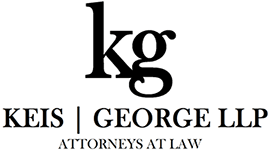Uninsured Motorists versus Underinsured Motorists
Uninsured auto subrogation refers to the process of recovering damages from a motorist that was at fault in an automobile accident, but who lacked insurance coverage. When an uninsured motorist causes an accident, the victim’s (aka the insured and/or the policyholder) insurance company (aka the insurance company) will try to recover the monies owed from the at-fault driver. This is subrogation. So, this means the insurance company will step into the shoes of their insured/policyholder and try to recover monies to cover the accident damages, directly from the uninsured driver (aka the defendant).
Uninsured Auto Subrogation occurs when you are involved in an accident with a driver who does not have insurance. If you have uninsured motorist coverage, your insurance company may pay for the damages. Your insurance company will then file a subrogation claim to recover the costs resulting from the damages, against the at-fault driver.
Underinsured Auto Subrogation occurs when you are involved in an accident with a driver who has insurance, but their policy limits are not sufficient to cover the damages you have suffered. In this case, your insurance company may pay for your damages in excess of the at-fault driver’s policy limits and then file a subrogation claim to recover the additional costs.
What’s the Subrogation Process
Subrogation is a process that allows an insurance company to recover the expenses it paid out to its policyholder for a loss that was caused by another party. After an automobile accident, if the other driver was at fault and had insurance coverage, the victim’s insurance company can file a subrogation claim against the other driver’s insurance company to recover the cost of repairs, medical expenses, and other damages. The process typically works as follows:
- The insurance company investigates the accident and determines the responsible party;
- If the other driver was at fault, the victim’s insurance company will send a demand letter to the other driver’s insurance company, asking them to pay for the damages;
- The other driver’s insurance company may agree to pay the claim, in which case the victim’s insurance company will receive reimbursement for the expenses it paid out; and
- If the other driver’s insurance company refuses to pay the claim or is unable to pay the full amount, the victim’s insurance company may pursue subrogation through legal means, such as filing a lawsuit.
It’s important to note that subrogation can also work in reverse, with the other driver’s insurance company pursuing compensation from the victim’s insurance company if it is determined that the victim was at fault. The goal of subrogation is to ensure that the responsible party pays for the damages, rather than the insurance companies.
How The At-Fault Party is Determined
It is important to determine the at-fault party, so your vendor counsel can conclude who they need to go after for damages. Determining who the at-fault party is in an automobile accident is crucial for the following reasons:
- Cover Damages: The at-fault party is responsible for covering the damages and losses suffered by the other party.
- Determine Damages: Most automobile insurance policies require that the policyholder provide evidence of who is at-fault in order to file a claim. The insurance company will then use this information to decide whether to cover the damages and to what extent.
- Litigation: If the parties are unable to reach a settlement, the issue may go to court.
Types of Claims
The types of claims that may be filed will depend on the circumstances of the accident and the findings of the investigation. Uninsured and/or underinsured claims may arise in the following types of claims:
- Hit-and-run: If you are involved in a hit-and-run accident, your insurance company may file a subrogation claim against the at-fault driver if they are identified.
- Rear-end accidents: If another driver rear-ends you and is found to be at fault, your insurance company may file a subrogation claim against the other driver’s insurance company to recover the costs of repairs and medical expenses.
- Improper lane change accidents: If another driver changes lanes into your vehicle and is found to be at fault, your insurance company may file a subrogation claim against the other driver’s insurance company to recover the costs of repairs and medical expenses.
- Improper maintenance: If a vehicle defect or improper maintenance is found to be the cause of an accident, the insurance company may file a subrogation claim against the responsible party, such as the mechanic, vehicle owner, and/or the vehicle manufacturer.
Contact a Subrogation Lawyer
At Keis George, we pursue commercial and personal automobile subrogation in state and federal courts in Ohio, Illinois, and Indiana. Our subrogation attorneys pursue claims against the at-fault third party to recover what is owed. If necessary, our lawyers will garnish wages and levy bank accounts to ensure the proper resolution of a claim. Contact one of our subrogation lawyers. If you are a defendant, contact us to make payment arrangements and resolve your judgment in a timely and dignified manner.
